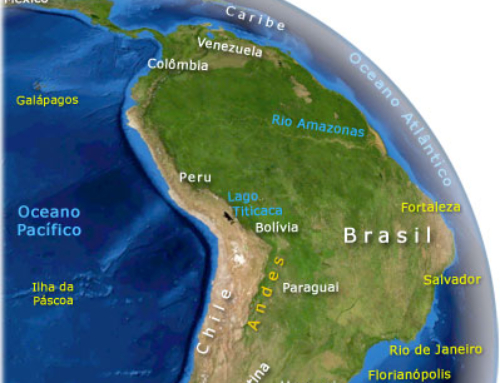As the world has become more competitive, global and complex every year, it is important to have information and a benchmark tool to analyze and understand how countries perform. In this scenario, for more than 30 years, the World Economic Forum´s annual Global Competitiveness Reports has elaborate The Global Competitiveness Index (GCI) that measures the productivity, competitiveness and business operating environment over 140 countries.
These reports identify advantages and impediments for national growth and are based on 12 factors that are called the “pillars of competitiveness” (World Economic Forum, 2011). They measure the levels of prosperity that can be earned by the country´s economy.
If we look at the last 5 years in the GCIs, the top 10 countries haven´t changed that much, they are almost the same. The changes come in the relative position of each one. The major advances comes with Singapore that jumped from the 7th place -that had in 2007- to the incredible and expectant 2nd place that has now. We can find an explanation in the words of Michael Zink, head of ASEAN and Citi´s Country Officer for Singapore, he say that “It’s a terrific place to do business – it’s a very open and global city and we have the opportunity to compete fairly and evenly against the domestic players” and adds “the playing field here is quite level. So as long as we can continue to compete domestically, we’ll continue to invest” (Human Resources, 2012), very clear.
Another important change comes from the US, which systematically has fallen in the ranking from their first place 5 years ago to the 5th place that they have now. According to Kai Bucher the Associate Director of the WEF, the problem lies on their macroeconomic vulnerability and some aspects of their institutional environment that “continue to raise concern among business leaders, particularly related to low public trust in politicians and concerns about government inefficiency” (Bucher, 2011). Finally and not less relevant in the top 10 countries is the amount of European nations that hold 7 of the 10 places, being Switzerland the number one for the third consecutive year (World Economic Forum, 2011).
Now, from the perspective of a technological and communication company that wants to expand abroad (like Nokia, Samsung, LG or Motorola), I think that the most important factors or pillars of competitiveness are the basic requirements of Institution and Infrastructure, the efficiency enhancer like the Market Size and the Business Sophistication and Innovation (World Economic Forum, 2011).
Institution because their quality influences investment decisions as well as the Government attitudes toward markets and freedom; Infrastructure related with the needs of a solid and extensive telecommunications network; Market Size because allows exploiting economies of scales, crucial in the technological markets and finally Business Sophistication and Innovation that permits introduce new products and services, another key factor (World Economic Forum, 2011).
By the other hand, if we think in potential countries where to enter, we can see that in the last 7 years the competitiveness in advanced economies has not grown or worst it has declined, unlike what happens in many of the emerging countries where it has improved (Bucher, 2011). We can think in emergent markets like Latin America with countries like Chile (31st), Panama (49th), Brazil (53th), Mexico (58th) and Peru (67th) or Asiatic ones like Taiwan (13th), Malaysia (21st), Korea (24th), China (26th), Brunei (28th), Thailand (39th) or Indonesia (46th) (Estopase, 2011). It seems that this could be their time.
Resources
Bucher, K. (2011, September 7). US competitiveness ranking continues to fall; emerging markets are closing the gap. Retrieved on April 11, 2012 from http://www.weforum.org/news/us-competitiveness-ranking-continues-fall-emerging-markets-are-closing-gap
Estopace, E. (2011, September 28). Singapore tops global competitiveness index in Asia. Retrieved on April 11, 2012 from http://www.enterpriseinnovation.net/content/singapore-tops-global-competitiveness-index-asia?page=0%2C2
Human Resources (2012, March 14). Singapore leads Asia in competitiveness. Retrieved on April 11, 2012 from http://www.humanresourcesonline.net/news/31550
World Economic Forum (2011). The global competitiveness report 2011-2012. Retrieved on April 11, 2012 from http://www3.weforum.org/docs/WEF_GCR_Report_2011-12.pdf






Leave A Comment